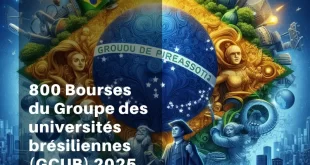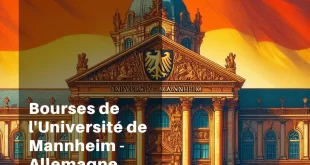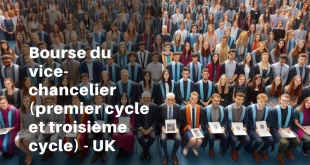Date de dernière candidature 17 mai 2024 00:00
Département TW01 – Département d’Architecture et d’Urbanisme
Contrat Durée limitée
Diplôme MA
Taux d’occupation 100%
Type de poste vacant Personnel de recherche
Description de l’emploi
Le projet de recherche Copying as Common Practice in Early Modern Architecture (CCPEMA) – financé par le Conseil européen de la recherche et dirigé par Elizabeth Merrill (PI) – lance un appel à candidatures pour un doctorant à temps plein dans le domaine de l’histoire de l’architecture moderne. Le terme pour ce doctorat. Le poste est initialement d’un an mais peut être prolongé de 3 ans supplémentaires sur la base d’une évaluation positive.
À propos du projet
L’histoire et la théorie de l’architecture moderne regorgent de discussions sur le génie artistique et la création inimitable. Cela se reflète dans l’attention prédominante accordée au disegno – terme qui désigne à la fois la pratique et le produit du dessin – et plus particulièrement aux dessins autographes. Dans la seconde moitié du XVIe siècle, Giorgio Vasari a développé une théorie cohérente du design, dans laquelle le design artistique était compris comme une entreprise intellectuelle et catégoriquement distingué des processus d’exécution. Cet appareil théorique s’est étendu jusqu’à la fondation des premières académies d’art, institutions dans lesquelles les activités d’artiste-architecte étaient programmatiquement distinguées de celles de technicien-ingénieur, ouvrant ainsi la voie à des distinctions disciplinaires formellement mises en œuvre au XVIIIe siècle.
Ce projet de recherche financé par l’ERC remet en question le concept vasarien de disegno en tant que cadre pour comprendre les dessins architecturaux et les pratiques de l’architecture moderne. En s’appuyant sur les modèles d’épistémologie développés dans l’histoire des sciences, le projet avance l’hypothèse selon laquelle les techniques de dessin mécanique, et plus particulièrement les dessins produits par copie manuelle et traçage direct, ont servi de fondement à l’enseignement de l’architecture dans la période antérieure à l’avènement des écoles formelles d’architecture. Cette proposition confronte les conceptions normatives historiques de « l’architecture » et du « dessin » artistique. Dans les histoires classiques de l’architecture des XVe et XVIe siècles, les dessins de sujets mécaniques se distinguent catégoriquement de ceux de sujets ornementaux ou plus « artistiques ». Parallèlement, les dessins manifestement autographes ou individuels sont célébrés comme l’incarnation du génie singulier de leur créateur. Les dessins copiés, à leur tour, et ceux qui emploient la pratique du lucidare ou du traçage sur du papier transparent huilé (carta lucida), ont longtemps été considérés comme corrompus ou frauduleux. Dès le XVIe siècle, les théoriciens ridiculisaient explicitement les pratiques de copie, et en particulier la copie mécanique, les considérant comme indignes de l’artiste et préjudiciables à la pratique essentielle du disegno. On pensait que les techniques de traçage fournissaient aux artisans et amateurs peu qualifiés une entrée dans la pratique artistique et, ce faisant, soumettaient l’art à leur savoir-faire piétonnier.
The censure of copying and exaltation of disegno – from sixteenth century art theory to the present day – has cemented the idealization of early modern Italy’s “great” architects and artists. Equally critical, the dismissal of a substantial volume of “practical” architectural drawings – drawings of mechanical subjects and pattern-book-type traces of canonical models – has impoverished our knowledge of early modern architecture and design practices. By wholly accepting Vasari’s proposal for the early modern architect, scholars have dramatically simplified what it was to be an architect in this period. The (frequently anonymous) authors of architectural copy drawings have been ignored, and with this, our understanding of the mainstream cultures of early modern architecture has remained obscure. Moreover, as evidenced in many compendia of copy drawings, the language of architectural drawing remained remarkably heterogeneous into the sixteenth century. The architect’s interest in ancient building forms and ornaments was often tied to his appreciation for contemporary building designs, as well as figurative motifs and even mechanical subject matter. This is to say, where sixteenth-century theorists distinguished between the “artistic” and the “mechanical”, the “high” and the “low,” in practice, these subjects often went hand-in-hand.
Within the study of early modern painting, recent decades have seen an increase in research on techniques of copying and tracing. Yet there remains a critical absence of scholarship that examines, in positive terms, the derivative practices that underscored coeval architectural production. This project relies on the material evidence of surviving graphic material, disregarding the modern (and anachronistic) disciplinary distinctions between “art,” “architecture,” and “engineering.” Considering architectural drawings according to their use and epistemic value, this project seeks to situate their authors – known or unknown – into the practical and cultural cosmos that encircled them.
Job profile
The Tasks of the Ph.D.
As a member of the ERC research group and the Ghent University Department of Architecture and Urban Planning, the Ph.D. will work together with the international team under the supervision of the PI. The Ph.D. will bring their own ideas to the topic and help shape the investigation on the practices and material evidence of tracing in early modern architecture. The Ph.D. will be responsible for executing archival-based research on drawings and will catalogue their research findings in the project database. The Ph.D. will have the opportunity to pursue additional training in the study of drawings, and the history and conservation of paper. Based on this research, the Ph.D. researcher is expected to (co)author scientific articles, disseminate results at international seminars and conferences, complete a Ph.D. dissertation, and lend support to other project and departmental activities. While pursuing the project objectives, the Ph.D. will be encouraged to develop their profile, enhance their skills, and involve themselves in other activities of interest to them, especially in the Department and the University.
Requirements
- MA in Art or Architectural History, or in a closely related field (to be completed by the start date of the position)
- Motivation and ambition in research
- Capacity to produce high-quality written work
- Proficiency in reading Italian and German, as well as in writing academic English
- Willingness to communicate and collaborate actively as a team member
- Willingness to travel and complete archival-based research
- Interested in the possibilities and methods of digital humanities and online databases
Working Conditions
- The contract will run for a term of 12 months, which can be extended for another 36 months following positive evaluation.
- The start date will ideally be 1 September 2024, although this can be negotiated
- The fellowship amount is 100% of the net salary of an AAP member in equal family circumstances. The individual fellowship amount is determined by the Department of Personnel and Organization based on family status and seniority. A grant that meets the conditions and criteria of the regulations for doctoral fellowships is considered free of personal income tax. Click here for more information about our salary scales
- All expenses for research-based travel will be covered by the project budget.
- You will work in a dynamic, stimulating, and supportive environment in Ghent, as part of a new research group in the history of architecture.
- Arrangements can be made for some remote work and flexible hours to encourage healthy work-life balance
- All Ghent University staff members enjoy a number of benefits, such as a wide range of training and education opportunities, 36 days of holiday leave (on an annual basis for a full-time job) supplemented by annual fixed bridge days, bicycle allowance and eco vouchers. Click here for a complete overview of all the staff benefits (in Dutch).
How to apply
Candidature
Pour postuler à ce poste, veuillez envoyer les documents suivants au format PDF au Prof. Elizabeth Merrill ( elizabeth.merrill@ugent.be ) avant le 17 mai 2014 :
- Une lettre de motivation : une lettre de candidature dans laquelle vous expliquez en quoi vous répondez aux critères et pourquoi vous devriez être pris en considération pour ce doctorat. position.
- Un CV détaillé : contenant un aperçu de vos études, de votre travail et de toute autre expérience pertinente.
- Diplôme : une copie de votre diplôme de maîtrise, s’il est déjà détenu. Si vous possédez un diplôme étranger dans une langue autre qu’une langue nationale belge (néerlandais, français, allemand) ou anglais, veuillez ajouter une traduction dans l’une de celles-ci. Si votre diplôme de maîtrise n’est pas encore en cours, soumettez une preuve de son achèvement imminent (comme une attestation de votre superviseur confirmant sa délivrance avant la date de début).
- Une lettre de recommandation : soumise sous pli séparé par un conseiller, un collaborateur ou un employeur qui peut parler de vos diplômes universitaires et de votre caractère personnel.
- Autres documents : une publication récente ou un chapitre de votre mémoire de maîtrise.
Caractéristiques de l'emploi
| Catégorie emploi | Doctorat |
 medjouel.com Etudes Non Stop
medjouel.com Etudes Non Stop



